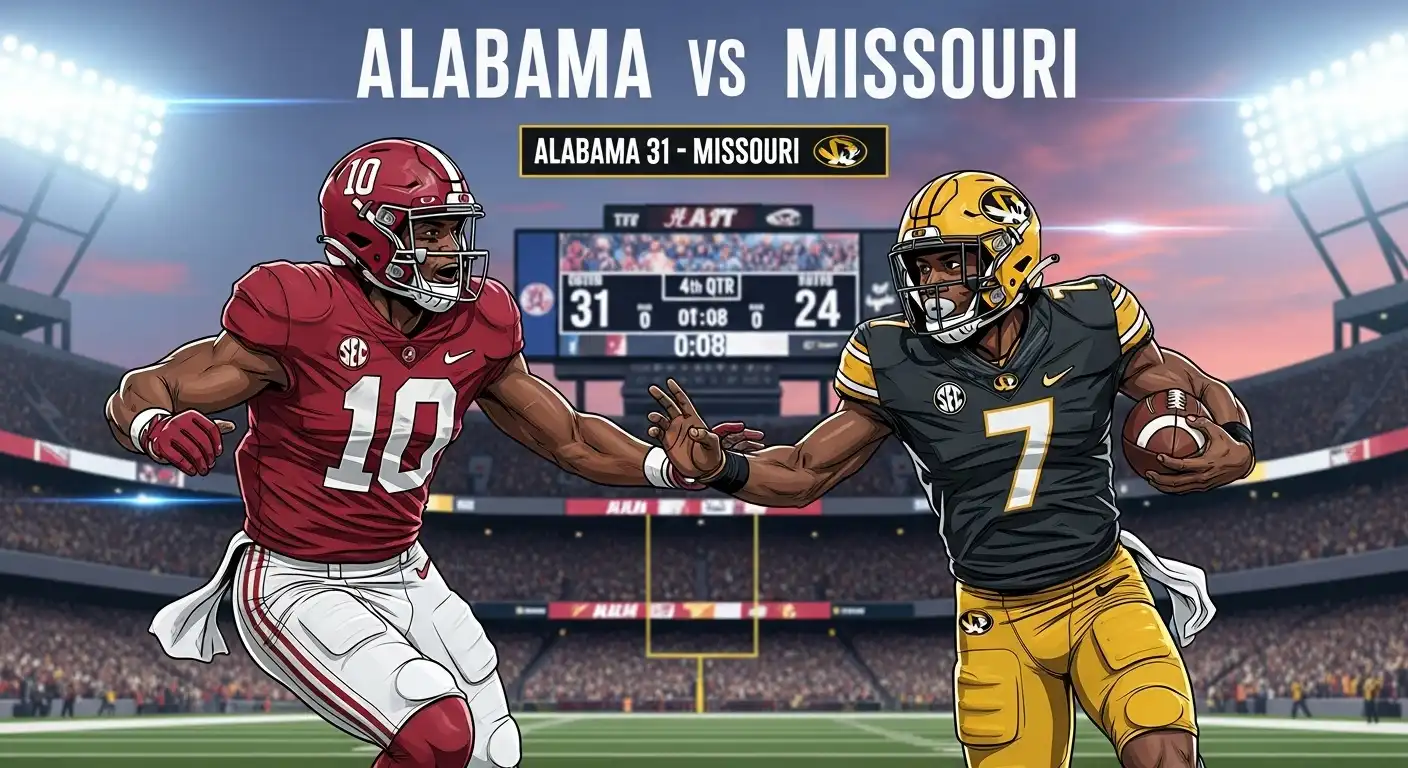In a week filled with major talking points across the digital landscape, few things capture the American zeitgeist like college football. Discussions have been vast, ranging from the major conference showdowns in the alabama vs missouri game to the Big Ten clash between ohio state vs illinois. Amidst these sports conversations, other unrelated topics have also trended, with search interest curiously bubbling around entities like ian watkins, showcasing the diverse and often unpredictable nature of online discourse. However, for fans of the gridiron, the focus remained squarely on the field, where legacies are built and championship dreams are forged or broken. The matchup in the SEC, in particular, promised a spectacle of power, strategy, and raw athleticism, and it did not disappoint. The air in Columbia was electric. A sold-out Faurot Field at Memorial Stadium was a sea of black and gold, a roaring cauldron of anticipation for what many believed could be a season-defining upset. The Missouri Tigers, confident and riding a wave of offensive success, were set to host the perennial powerhouse Alabama Crimson Tide. This wasn't just another conference game; it was a statement opportunity for Missouri and a critical test of resolve for an Alabama team with its sights set firmly on the College Football Playoff. For Alabama, every game is a referendum on their dynasty. Under the legendary guidance of their head coach, they are the benchmark against which all other programs are measured. Coming into this contest, their offense was a well-oiled machine, balancing a potent passing attack with a punishing ground game. Their defense, while perhaps not the impenetrable wall of years past, was still laden with five-star talent, capable of shutting down any opponent on any given Saturday. The pressure to win, and to win decisively, is a constant companion for the Crimson Tide. Missouri, on the other hand, entered the matchup as the hungry underdog playing with house money. Their high-octane offense had been lighting up scoreboards all season, built on the back of a savvy quarterback and a receiving corps with elite speed. The question for the Tigers was never about their ability to score points; it was whether their defense could get enough stops against the sheer size, speed, and depth of Alabama. A win would rewrite their season's narrative, while a competitive loss could still earn them national respect. This clash of styles and stakes set the stage for a memorable SEC battle. Pre-Game Analysis: Setting the Stage for an SEC Showdown Entering this crucial SEC contest, the narrative was one of established dominance versus ambitious challenge. Alabama's path to victory was clear: execute with discipline, control the line of scrimmage on both sides of the ball, and avoid the uncharacteristic mistakes that can give a home underdog life. Their offensive line was expected to be a key factor, tasked with protecting their quarterback from Missouri's aggressive pass rush and creating lanes for their stable of talented running backs. Defensively, the plan was to contain Missouri's explosive plays, force them into long third-down situations, and make their quarterback uncomfortable in the pocket. On the other sideline, Missouri's game plan hinged on disruption and tempo. They knew they couldn't win a traditional, physical slugfest against Alabama. Their best chance was to use their offensive speed to spread the field, create mismatches in space, and score early to put the pressure on the Crimson Tide. Defensively, they needed to be opportunistic. This meant generating turnovers, getting sacks on key downs, and taking calculated risks to get Alabama's offense off schedule. The home crowd was their "12th man," and feeding off that energy from the opening kickoff was paramount to their strategy. The coaching matchup itself was a fascinating subplot. Alabama's head coach is a master of in-game adjustments and meticulous preparation, rarely out-schemed. Missouri's staff, known for their offensive creativity, had to craft a near-perfect game plan to find cracks in the Crimson Tide’s armor. Pundits and fans alike were eager to see if Missouri’s innovative offense could outmaneuver Alabama's disciplined, talent-rich defense in a classic battle of strategy and execution. It was more than just players; it was a chess match between two of the conference's sharpest coaching minds. Offensive Philosophies Head-to-Head Alabama's offense is a masterclass in pro-style efficiency and power. They employ a balanced attack that forces defenses to defend every inch of the field. Their ability to establish a physical running game wears down opponents over four quarters, setting up play-action passes for huge gains. Their quarterback, a poised and accurate passer, excels at distributing the ball to a wealth of future NFL-caliber receivers. The Crimson Tide's philosophy is not about trickery; it's about imposing their will through superior talent and flawless execution. They are comfortable in long, methodical drives that chew up the clock and demoralize a defense. In stark contrast, Missouri's offense is built on the principles of the spread and a high-tempo attack. They want to snap the ball as quickly as possible, preventing the defense from substituting personnel or getting set. This approach uses horizontal speed—jet sweeps, screen passes, and quick throws to the perimeter—to stretch the defense from sideline to sideline. This, in turn, opens up vertical passing lanes downfield for their speedy receivers. Their quarterback is an excellent decision-maker in this system, capable of winning with both his arm and his legs. Their goal is to create chaos and turn the game into a track meet, a style that has historically given more traditional, powerful teams trouble. The Defensive Game Plan For Alabama's defense, the primary objective was containment. They understood that Missouri would likely get some big plays, but the key was to prevent those plays from turning into touchdowns. This meant excellent open-field tackling from their defensive backs and disciplined pass rush lanes from their front seven to keep Missouri's mobile quarterback in the pocket. "Bend, don't break" was the likely mantra, forcing Missouri to execute long drives, increasing the probability of a penalty, a sack, or





